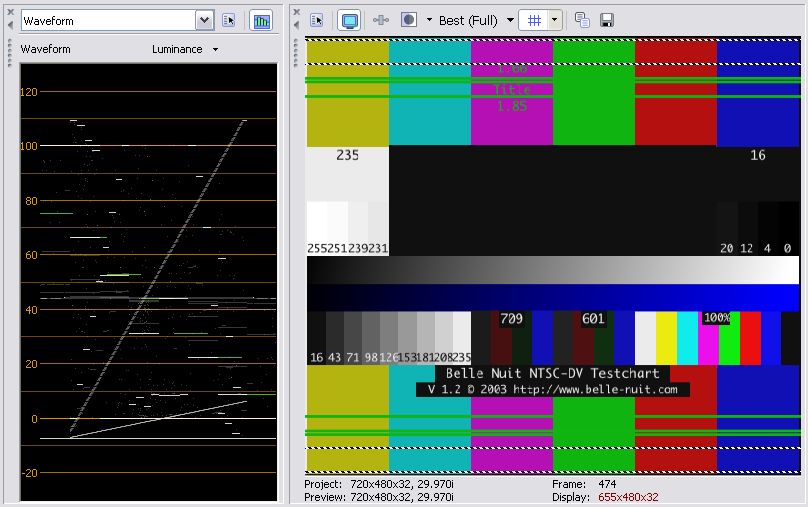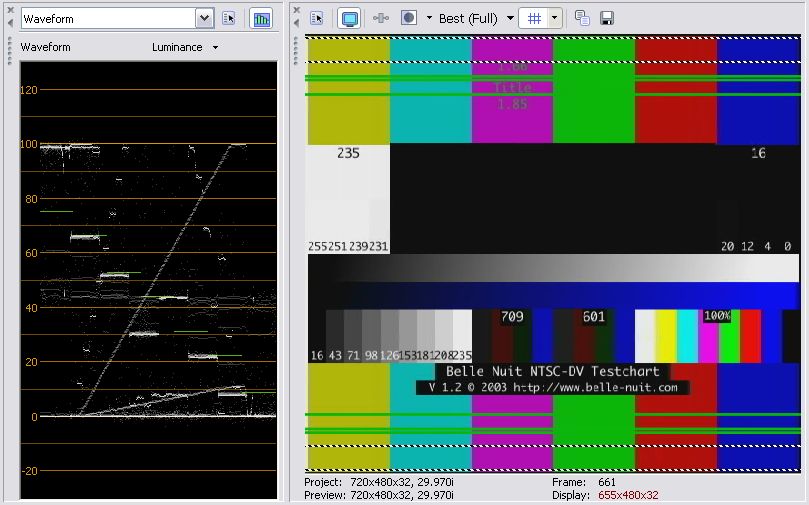OK, I feel kinda stupid about this issue because i've been on this forum off and on for a few years. I've leaned A LOT for you all on what prgrams to use, how to do certain things and the like. I do fairly well now in taking my mini DV and stills and making some nice DVDs with transitions, menus, and effects. I even manage to get most converted to mpeg2 and burned to DVDs.
Codecs however, I just can't get a grasp on. When I transfer my miniDV to the HD does it come with a "DV codec"? If I downleaded the panasonic DV codec, does THAt become the codec for captured DV?
Now, when I encode to mpeg2, is tis a codec change? Is THAt what encoding is - changing codec? Also, can I control what codec is used or is Dv ONE CODEC and mpeg2 ONE OTHER codec?
Lastly, if I use an all-in-one (I use Magix Movie Edit Pro 2004 for capture and edit, sometimes to encode and author) does that program dictate all the codecs i use. Magix 2004 uses the "Ligos" codec, I've read. Is that "good", "bad" or doesn't it matter? Restated, is it the codec itself or the encoder process that determines the final quality?
Thanks for any help in clearing this up. Please don't tell me to "do a search" because I have and must be too stupid to "get it"!
+ Reply to Thread
Results 1 to 9 of 9
-
-
Well, let's start from the beginning, what's encode vs. what's decode.
A "pure" uncompressed video stream would include EVERY SINGLE BIT on the screen. Figure 640x480x32-bit color, you're looking at, oh, 9830400x30 frames a second, for 294912000 bps. If you prefer bytes, that's 36864000 Bps, or 36000 KBps. Clearly, that's a LOT of data to pump through.
An encoder is an attempt to squeeze that HUGE data stream down to something that one can reliably manage. Different companies have different algorithms, and different algorithms have different strengths and weaknesses. Some are fast to encode, but not so good quality, while others are VERY slow to encode, but retains excellent quality, some are good for fast motions, some are good for details, some are easier to play on slower CPUs, and so on and so forth. If you feed a video stream to an encoder, you get an encoded data stream, and you'll need a matching decoder to turn that back into a video stream.
Follow me so far? Maybe this little diagram may help:
VIDEO --> encoder --> encoded data --> decoder --> VIDEO
If you have a DV camera, it can probably feed you either uncompressed video stream (VIDEO above), or DV-encoded AVI (encoded data, with DV codec). DV codec has a LOT of keyframes (you'll have to search for the definitions) to make editing easier.
If you need to convert an encoded data stream into data usable by a DIFFERENT decoder, the operation is called "transcoding" (translation / encoding). For example, AVI --> MPG is transcoding. XVID.AVI into CINEPAK.AVI is transcoding.
A codec, is just a short name for encoder / decoder.
Not having used that Magix program, I can't tell you how does it work or how "good" it is. And I don't use the Ligos codecs myself as I haven't captured anything lately. So no comment there.
However, I hope the preceding explanation has helped you somewhat. -
CODEC A filter used to encode and decode data into/from image, video and/or audio.
No - it's already encoded as DV.Originally Posted by tmh
Yes.Originally Posted by tmh
Yes, by installing (and telling the application you use to encode/decode to use a specific codec when encoding/decoding)Originally Posted by tmh
Yes. They are different codecs. However, there are different DV codecs and different mpeg codecs, just that there are many different application that can read (=decode) and/or save (=encode) a .doc (MS Word format) file.Originally Posted by tmh
It's the codec, and how it is configured that determines quality. The application you use is what configures the codec (or lets you configure it)Originally Posted by tmh
The answers are on a general principle only, as the questions are rather general.
/Mats -
I'll try to take it step by step for a DV source.
Your DV camcorder internally "encodes" raw video from the CCD to DV format in realtime. DV format retains all fields for editing and is ~5x compressed. DV format is recorded to tape and also is available for transfer over the IEEE-1394 connection as a data stream.
When you "capture" DV format video over IEEE-1394, all you are doing is directing the the DV data stream into a file. If done correctly, this will be an exact duplicate of the data stored on the tape. There is no "codec" required for this process unless you monitor the video and audio during transfer. In that case, a DV codec is used to decompress the stream for display and audio monitoring. Usually the Microsoft DV codec is used for monitoring since it is built into DirectX.
Even if you are monitoring the DV stream with a DV codec, the data stream is still directly transfered into the DV-AVI file and is unaffected by the monitoring process.
So, the result is a DV-AVI file that has the same unprocessed DV data that exists on the DV tape.
If you edit this file, the editing program needs to decode DV format to the editor's native format (aka "timeline" format). For most editors this is uncompressed 24bit RGB or 12 to 16 bit YCbCr (YUV). The editing program can also use the built in Microsoft DV codec, but many use their own DV codec for various reasons that I will skip for now. Once the data is in uncompressed form, it can be edtied and then recompressed to DV or some other format like DVD MPeg2 with a MPeg2 encoder.
Hope that helps. -
Thanks you all for the help. I'm getting it now. I was hung up on the encode/decode part which as explained by the three of you makes good sense now.
With edDv's example, when I edit the DV file in my edit software, then, if I save the edited "project" back as DV-AVI file, it will do so with a DV codec which may be different than the codec the Dv was stored in on the DV tape, correct? In THIS step, is most any DV codec OK if I will then be transcoding to an mpeg2 codec to make DVD compliant?
Also, Magix Movie Edit Pro uses a 1-pass encoder with the ligos mpeg2 codec - if my results aren't great it may notbe the codec, but the 1-pass vs. 2-pass and other ways the codec is being used, right? So, if TMPGenc gives better results it may not be it's actual mpeg2 codec as much as the way it uses it? Or, I understand what you said that it may or may not be the best codec for what I'm doing.
Lastly (I promise) when I "Install the Panasonic DV codec" am I just making it available for certain apps that allow me to select the codec or ones that need a 3rd party codec? -
What do you mean by "save [it] back"? Back where?Originally Posted by tmh
If you edit as DV, you usually save it as DV.
Keep in mind that AVI can be used as a "container" or a "wrapper", which is NOT related to the codec at all. MP4, MOV, AVI, MKV, OGM, etc. are all containers. They could contain video and audio of different codecs. So a DV-AVI is just regular DV, albeit in an AVI wrapper.
As long as your transcoder can read that DV codec, sure.In THIS step, is most any DV codec OK if I will then be transcoding to an mpeg2 codec to make DVD compliant?
Essentially correct, it depends on the encoder itself AND the settings.Also, Magix Movie Edit Pro uses a 1-pass encoder with the ligos mpeg2 codec - if my results aren't great it may notbe the codec, but the 1-pass vs. 2-pass and other ways the codec is being used, right? So, if TMPGenc gives better results it may not be it's actual mpeg2 codec as much as the way it uses it? Or, I understand what you said that it may or may not be the best codec for what I'm doing.
Ones that need 3rd party codec, selectable.Lastly (I promise) when I "Install the Panasonic DV codec" am I just making it available for certain apps that allow me to select the codec or ones that need a 3rd party codec? -
Yes and no. Here is where it gets complicated.Originally Posted by tmh
Easy answer is DV is a standard and so all DV codecs should perform the same in theory. When you dig deeper, this isn't true. Also, editing software differs in what is reprocessed and what is passed as is. Prosumer level software will only decompress DV for frames that are filtered (e.g. levels filters, effects and transitions). The software is smart enough to straight copy the frames that aren't changing for zero generation loss. Those frames remain as encoded in the DV camcorder. Frames that are processed by the edit program loose a codec generation (i.e. DV decode, filter, output encode).
The early Panasonic DV codec is often used for VirtualDubMod. I recently evaluated it and found it saws off the video above level 235 and below level 16.
before

after Panasonic DV codec

https://forum.videohelp.com/viewtopic.php?t=295422&postdays=0&postorder=asc&start=60
The DV codec will uncompress DV. The MPeg2 encoder will encode from uncompressed or directly transcode the DV. You need to get down into the design of the encoder and how it is handled in the editing program. For most people, this means placing trust in the edit program developer. The easy path is to uncompress everything and reprocess. This creates an unnecessary generation loss.Originally Posted by tmh
I'm not familiar with Magix_Movie_Edit_Pro so no comment.Originally Posted by tmh
Could be either but "ones that need a 3rd party codec" do that because they don't want to pay a license fee.Originally Posted by tmh -
very good thread, gentlemen!
 could this be pdf'd into an FAQ?
could this be pdf'd into an FAQ?
also, I'd like to know if codecs have any special install/uninstall probs (XP registry & such).
Is it OK to slap a half dozen or so in at a time to check out, or do you sneak'em in one at a time with great care? -
I recommend one DV codec at a time as seen in device manager, video codecs. There will also always be the MS DV codec buried in DirectShow and others licensed and captive to pro editors.
Recommends: Kiva.org - Loans that change lives.
http://www.kiva.org/about
Similar Threads
-
Basic advice on codecs/filters/hardware combinations
By mrg155 in forum Newbie / General discussionsReplies: 5Last Post: 19th Dec 2011, 11:37 -
Calling MediaInfo from Visual Basic to et video info
By SearchQuality in forum ProgrammingReplies: 18Last Post: 2nd Nov 2011, 07:36 -
Need basic info on Simple profiles when capturing video with XviD codec
By snafubaby in forum Capturing and VCRReplies: 1Last Post: 19th Mar 2011, 22:54 -
Freeware App To Change Video File Size, But Not Video Or Audio Codecs
By LouieChuckyMerry in forum Video ConversionReplies: 4Last Post: 19th Jun 2010, 10:06 -
how do I change avi film codecs
By spikeysonic in forum Video ConversionReplies: 5Last Post: 15th Mar 2008, 09:52




 Quote
Quote